How oysters are grown on farms in the Chesapeake Bay
Categories: Production
By Pictolic https://pictolic.com/article/how-oysters-are-grown-on-farms-in-the-chesapeake-bay.htmlNow is the height of the oyster season, which lasts from September to April.
Mankind has been eating these mollusks for more than two thousand years. Once upon a time, when oysters lived in abundance in the wild, they were considered a dish of the poor, but uncontrolled fishing led to the fact that their population declined sharply, and by the second half of the 19th century, oysters became a delicacy.
Today they are grown in different countries of the world on special farms. The richest oyster regions are the Pacific and Atlantic coasts. And in this issue, you will learn how these delicious clams are grown in the US state of Maryland.
(Total 17 photos)
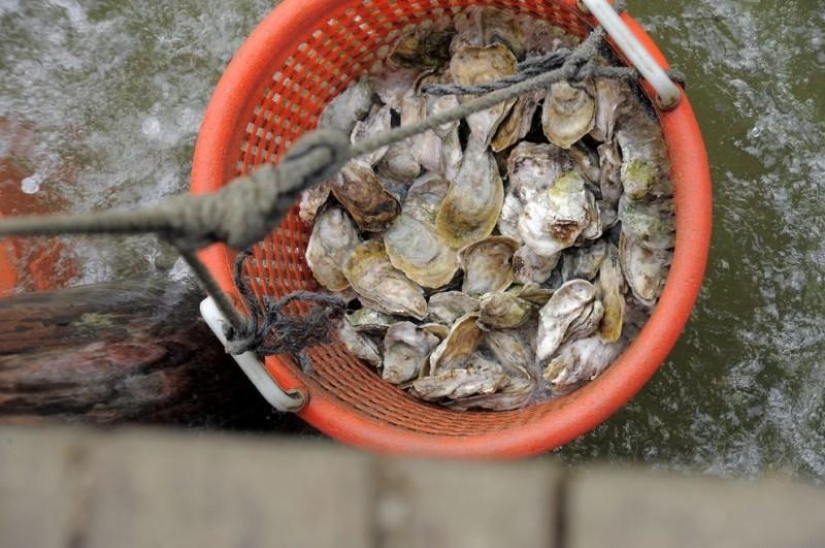
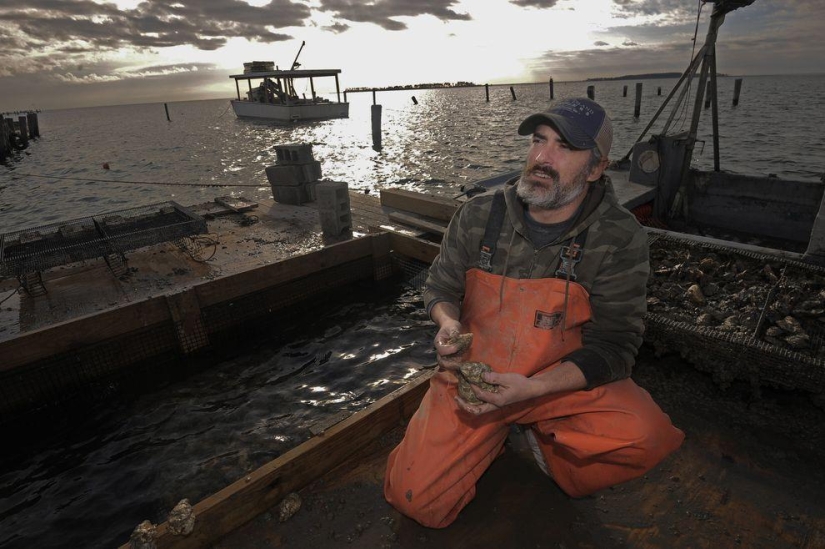
1. The oyster farming industry is booming in Maryland. Bivalves are bred under 300 licenses issued on an area of 1456 hectares in the Chesapeake Bay, both in water and on the bottom of the bay. Pictured: Timothy Devine, owner of Barren Island Oysters, which began farming oysters in June 2013. (Kim Hairston/The Baltimore Sun)
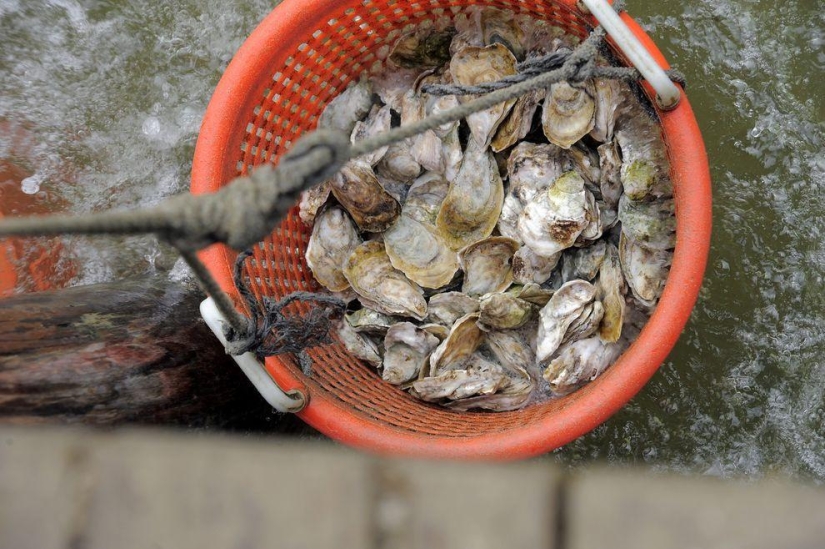
2. Selected Choptank oysters are washed in the Choptank River. (Kim Hairston/The Baltimore Sun)
Oysters prefer sea water with a low salt content, so they live only in the tidal zone near the mouth of rivers.
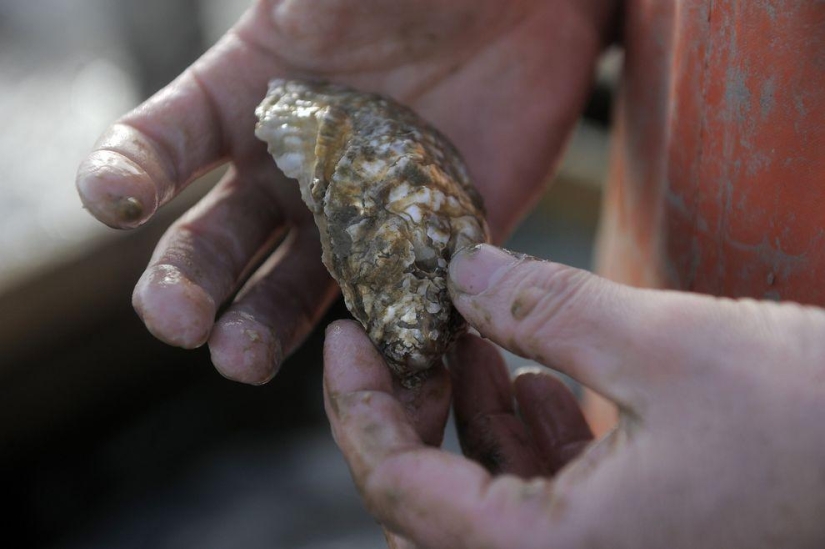
3. One of the farm-raised oysters. (Kim Hairston/The Baltimore Sun)
The first stage of oyster breeding is the collection of juveniles (spat) on collectors placed on oyster banks during their breeding season. At first, bundles of rods (fascines) were used as collectors, but then they began to use tile plates bent in the form of a gutter, coated with a special composition, from which it is easy to scrape off the fry that settled on them. Nowadays, plastic collectors with flexible plates of various shapes are used.
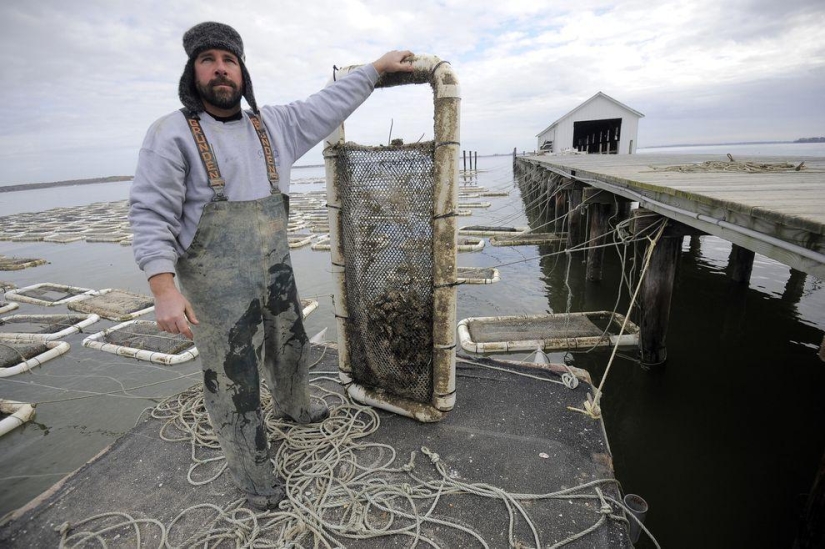
4. Kevin McClarren, CEO of Choptank, has been selling farm-raised oysters since 2005. (Kim Hairston/The Baltimore Sun)
Spat collectors are left in place for several months, and then slightly grown juveniles are transferred to frames tightened with a net, and today in bags made of plastic or metal mesh called "poches" (from the French poche - pocket), which stand on columns at a height of 25-30 cm above the bottom, or on wooden "tables". This measure protects the frames from being covered with silt and from predators, especially from the starfish.
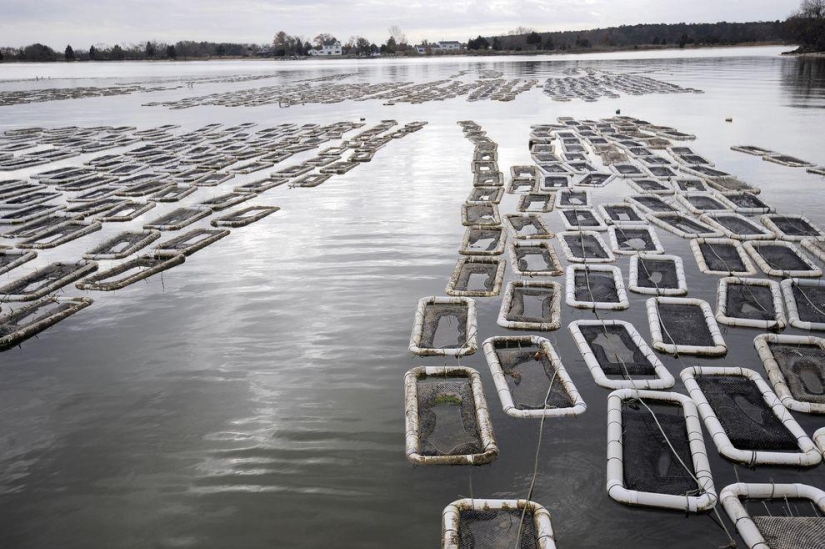
5. Oysters "grow" on rafts on the Choptank River. Choptank sold its first oysters in 2005. (Kim Hairston/The Baltimore Sun)
On some farms, shell farms are protected from wave breaking by a cemented rampart and divided into rows of pools; The inflow and outflow of water at low tide and high tide is regulated by locks.
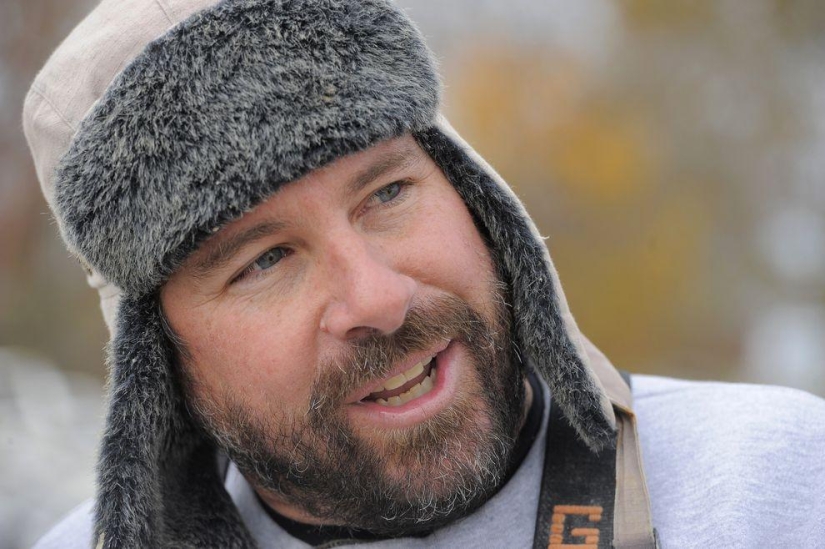
6. Kevin McClarren grows oysters on a 1.62 hectare site on the Choptank River using a technology he invented. (Kim Hairston/The Baltimore Sun)

7. From left to right: Hector Meduena and Kevin Covey return the oysters to the cage before releasing it into the Gulf of Thar. (Kim Hairston/The Baltimore Sun)
In such industrial parks, oysters are grown for two years, after which they are transferred to rearing pools. Until the 1960s of the 20th century, some salts and a culture of chlorella algae were added to these pools, which quickly multiplies in this nutrient medium and serves as food for oysters.
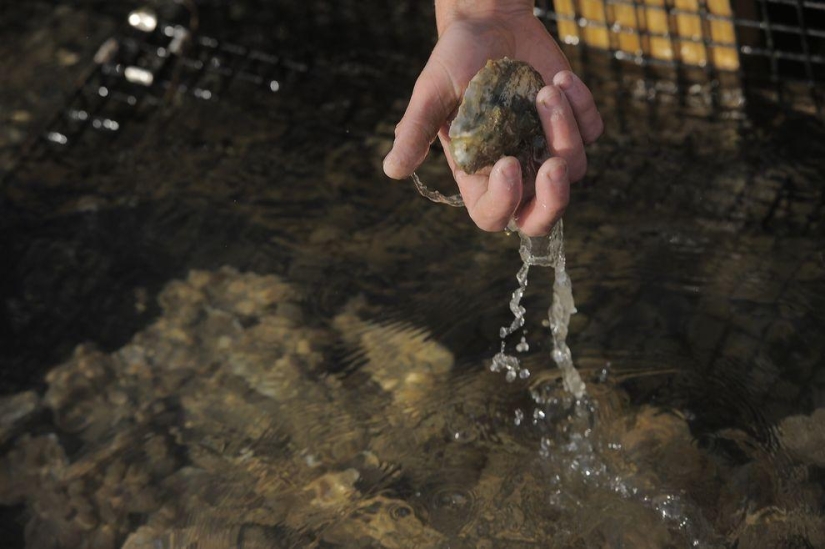
8. Timothy Devine takes one of his oysters out of the tank. (Kim Hairston/The Baltimore Sun)
Since far from all organisms that enter the intestinal tract are digested by mollusks, an optimal (not excessive) concentration of chlorella cells is maintained in nursery pools. Nowadays, supplements in the natural environment are unacceptable.
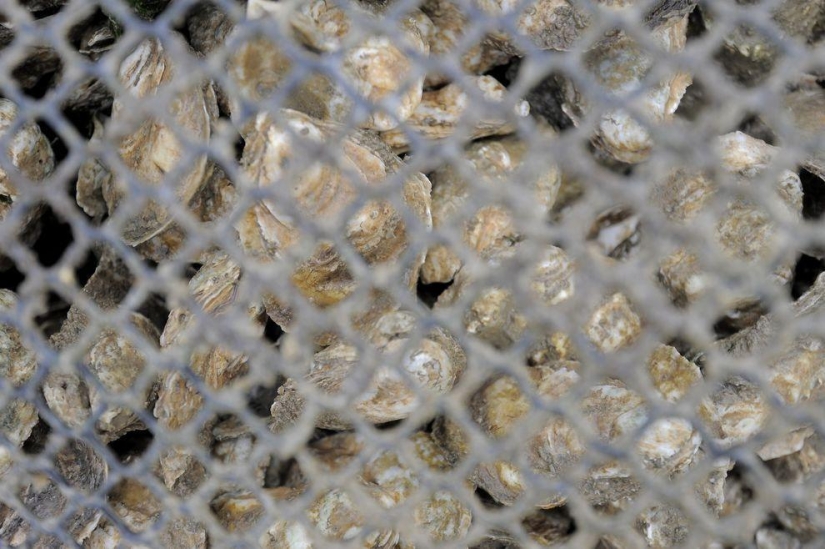
9. Oysters in the mesh of the raft in which they grow. (Kim Hairston/The Baltimore Sun)
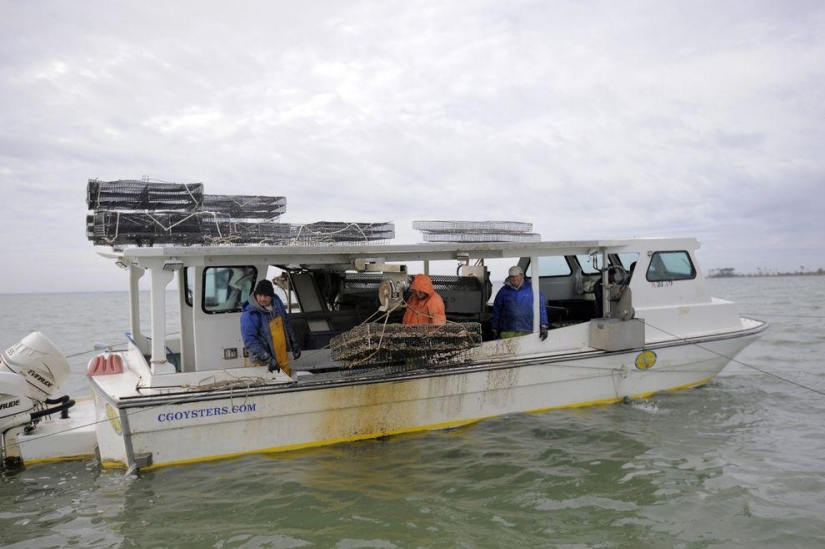
10. Hector Meduena and Kevin Covey take out a cage of oysters from the Bay of Thar. (Kim Hairston/The Baltimore Sun)
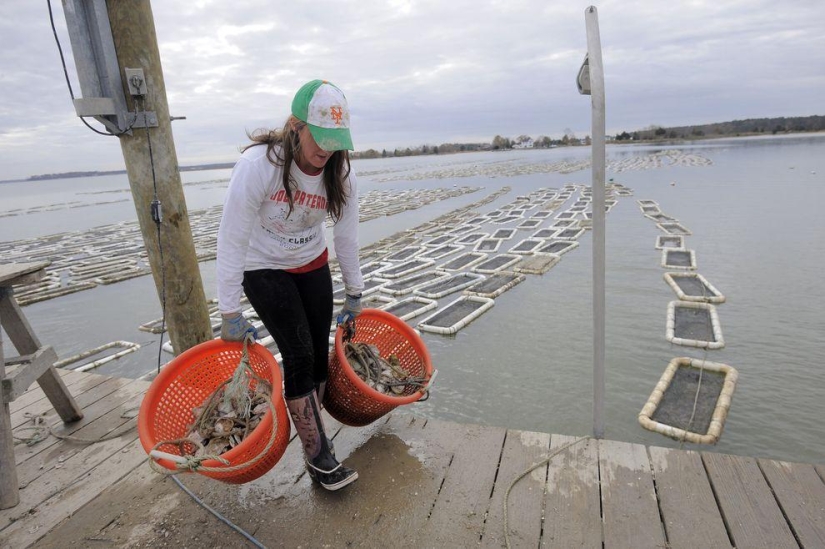
11. Regan Gifford with buckets of oysters on the pier. (Kim Hairston/The Baltimore Sun)
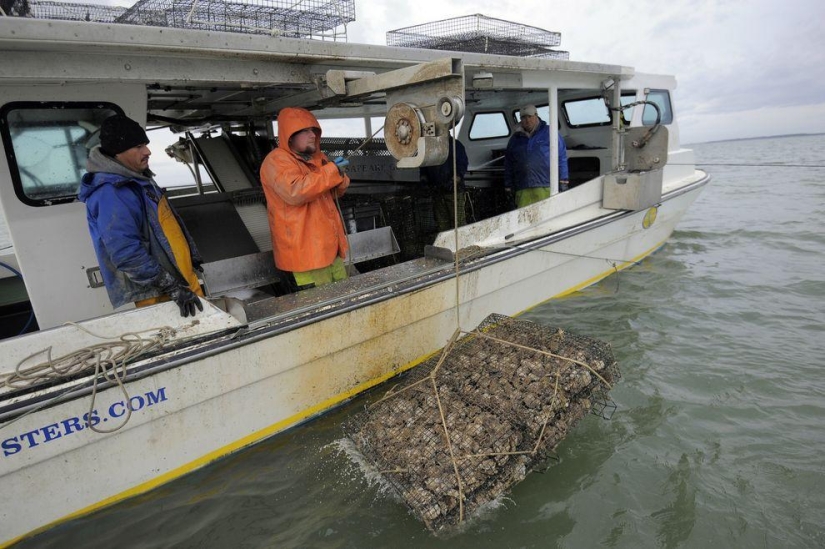
12. Hector Meduena and Kevin Covey return the cage to the Gulf of Thar. (Kim Hairston/The Baltimore Sun)
People living on the shores of warm seas have mined and used oysters for food since time immemorial. They began to artificially grow them back in the period of the Roman Empire. Even the ancient Greeks and Celts grew oysters at home.
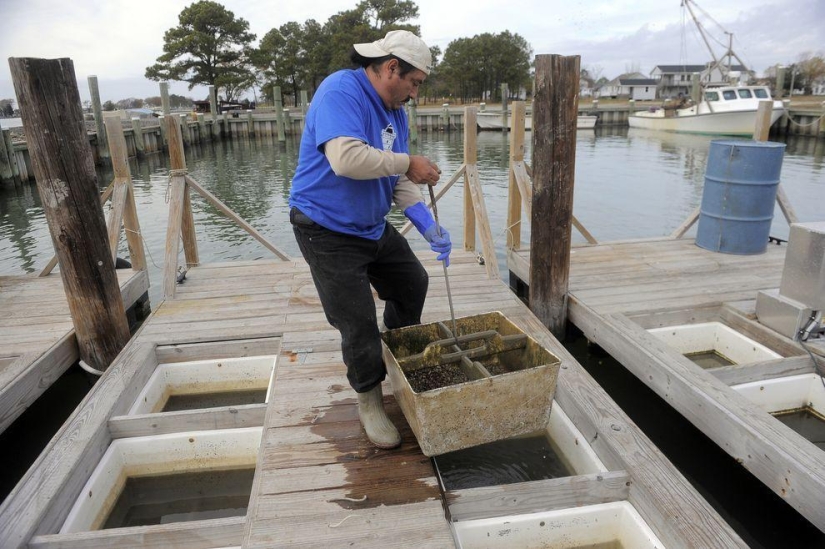
13. Manuel Garcia understands a floating raft. After the growth stage here ends, the oysters will be sent to the Gulf of Thar for further development. (Kim Hairston/The Baltimore Sun)
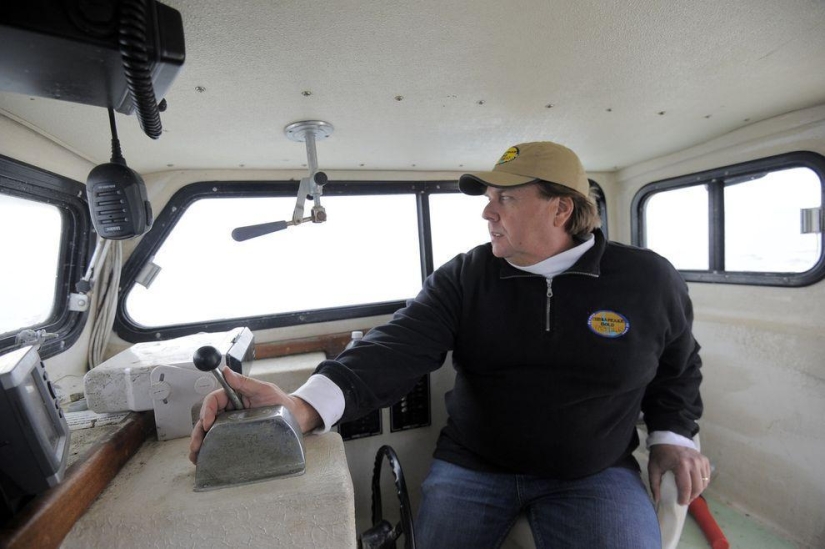
14. Johnny Shockley, co-owner of Chesapeake Gold Oysters, operates the boat. His company breeds oysters for commercial sale in the market. (Kim Hairston/The Baltimore Sun)
The rule that oysters should only be eaten during the months that have the letter "R" in their name became obsolete at about the same time that artificial breeding of oysters became widespread. Now the months when oysters produce caviar can be changed at the discretion of the manufacturer, and in addition, there are oysters that do not produce caviar. Although, there is another explanation for this rule - oysters in the breakups really spoil faster in the summer.
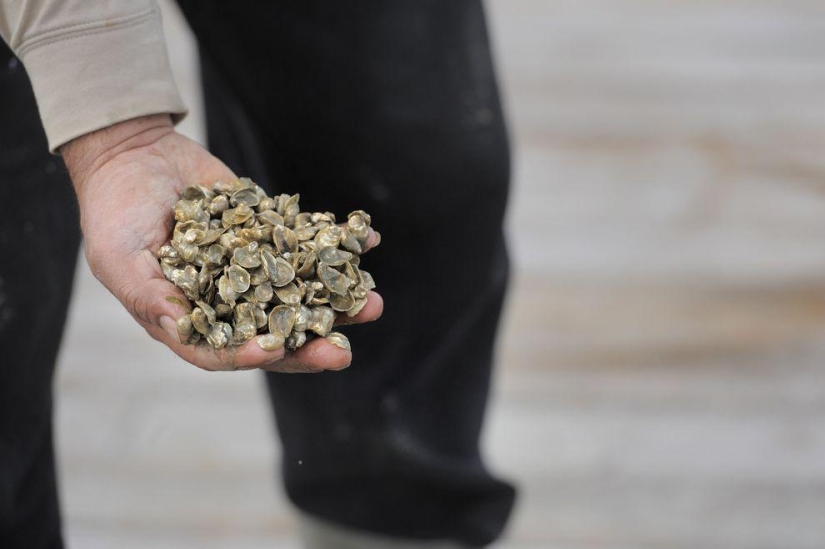
15. Manuel Garcia with a handful of young oysters. (Kim Hairston/The Baltimore Sun)
Oysters, which, like most other individuals, have two sexes, can change it. This can happen several times during the life of an oyster, under the influence of various factors. It's funny that usually oysters start their lives as "men", and when they are well fed and ready to produce offspring, they become "women". Therefore, it is even possible for an oyster to fertilize its own eggs.
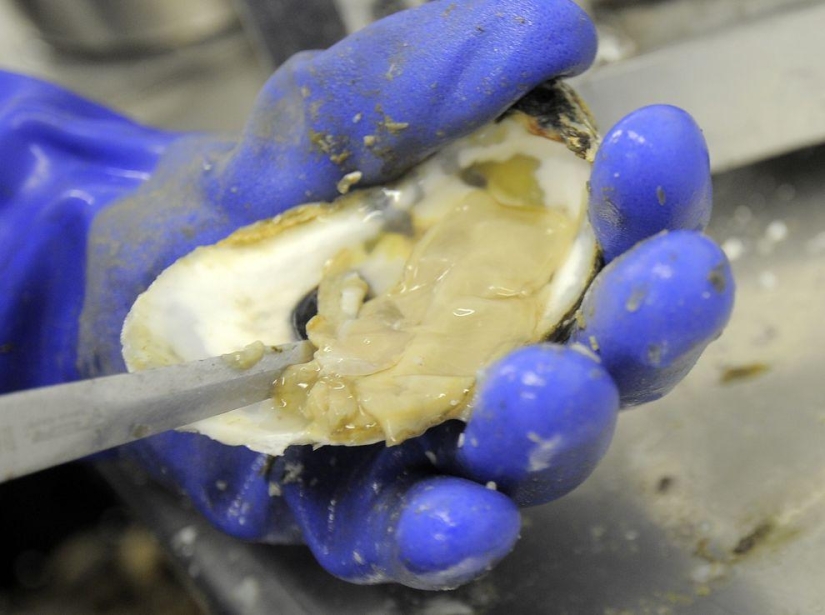
16. Manuel Garcia opens an adult oyster. (Kim Hairston/The Baltimore Sun)
The taste of oysters can be as versatile as wine, depending on the region where she lived, and can be salty, sweet, mineral, or even melon-like.
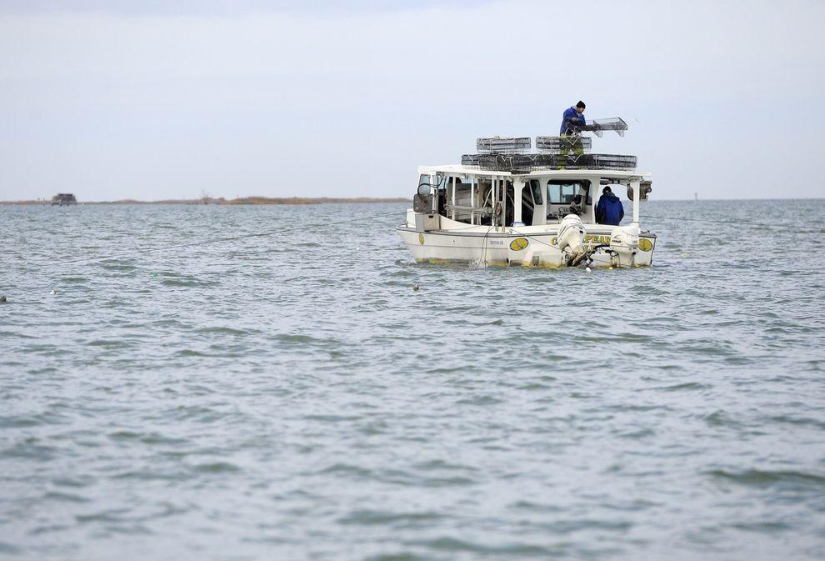
17. Vessel company Chesapeake Gold Oysters in operation. (Kim Hairston/The Baltimore Sun)
Recently, a team of American and Italian scientists scientifically proved that oysters contain rare amino acids that increase the content of sexual hormones. Oyster meat contains protein, fat, glycogen carbohydrate, minerals (iron, zinc, copper, calcium, iodine, phosphorus), nicotinic acid, as well as vitamins B1, B2, B12 and PP. Only 6 oysters - and the daily need of the body for iron and copper is provided!
Keywords: Delicacy | Shellfish | Oysters | Farm
Post News ArticleRecent articles

Most of us think that the color of the eggshell does not play any role and it is possible not to pay attention. But it's not and ...

The more we rely on technology, the more potential power hackers gain over us. It doesn't matter if their goal is to help or cause ...
Related articles

A startlingly beautiful earth snail crawled up the back of a crested crocodile and looked right into its toothy mouth. The unusual ...

July 11-World Chocolate Day! On this day, we can state with all responsibility that the most beloved delicacy of mankind is ...

For anybody not a secret that people in Asian countries are characterized by specific taste preferences. We have already told you ...

Creating a good portrait is one of the most difficult tasks for any photographer. In order to make a really natural and memorable ...